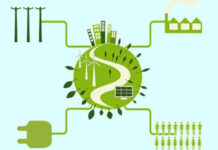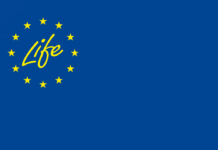Energy poverty represents an ending to many different stories: low-income families, the elderly, single-parent families. Knowing how to measure the different elements that can lead an individual to fall into this situation is not easy. It is a difficulty that Europe is wondering about and projects such as Step-in are trying to find solutions that can meet the needs of more people.
The project has received funds from the European union’s Horizon 2020 research and innovation program under grant agreement No 785125. So far it is implementing “An innovative global methodology” to study energy poverty “through tailor-made actions to support vulnerable consumers” explains Konstantinos Kanellos, Communication expert, VaasaEtt, to Canale energia which is a confirmed Network of interest member of the project. The project therefore carries out three “Living labs” in three difficult European locations with different geographical and economic characteristics: a mountainous region in Greece (Metsovo), a rural area in Hungary (Nyirbator) and an urban area in the United Kingdom with low quality housing (Manchester).
“Overall, Step-in aims to help more than 2,000 people improve their quality of life and trigger 1.69 Gwh of energy savings cumulatively per year across its three Living labs,” Kanellos explains. A variety of approaches are used to do this, including energy cafés, advisor visits and Ict tools. “The emphasis is on ethical energy consumption, for example by ensuring the maintenance or improvement of comfort levels, while minimising the rebound effects and limiting additional environmental impacts” concludes the VaasaEtt expert.
While the project Living labs in different geographical areas try to study the different aspects of energy poverty, there are also “specific trends” in the way people react to the problem in all european countries, “even if the exact relationship of the indicators involved is not known” underlines Dimitris Damigos, professor at the national Technical university of Athens. “In this context, this research attempts to uncover these common trends, along with all kinds of energy poverty indicator relationships that are common in Europe. Finding these similarities will help researchers and policy makers gain a better understanding of the problem across Europe”. An aspect that can become fundamental for detecting behaviors to achieve “common and effective policy lines against energy poverty in european countries“.
“The purpose is to encapsulate key project findings and best practices discussed among the consortium and Network members in policy recommendations targeting energy poor communities across Europe to be issued in the end of the project” Kanellos points out.
To address energy poverty Step-in “found that it is possible to take meaningful measures at the local level” said Stefan Bouzarovski, professor at the department of Geography, university of Manchester. To do this, it is necessary to engage with “active advice”. And “implementing some small measures to improve energy efficiency (such as the insulation of windows and doors, light bulbs, etc.) can really help improve well-being and reduce energy bills“.
To foster this awareness, useful materials have been developed by the project “which can be used with few modifications in any European country” assures Zoltan Kmetty, international research director, Ariosz.
Cooperation is at the heart of the project which works existing structures such as the european Union energy poverty Observatory (Epov), chaired by a project member (Prof. S. Bouzarovski), energy suppliers, policy makers, consumer organisations and industry experts to define future research and policy initiatives “There are 41 Network of interest members so far” Konstantinos Kanellos points out.
The Step-in tools to study energy poverty
“Electricity consumption meters and temperature and relative humidity recorders have been installed in selected households” explains Damigos. “In addition, the technical characteristics of the houses and the heating system are examined, and thermal images of the house are captured. All of this quantitative data is combined with information gathered from households to understand their needs and is uploaded to a specially designed platform to produce a report with personalised recommendations for each household. Our experience shows that the use of Ict tools and the provision of ‘hard’ data on energy consumption increases cooperation with the energy advisors and helps families to realise the “dos and don’ts” and make more informed choices “.
“STEP-IN also collaborates with other local programs and finds crucial actors within communities. These have a key role in connecting the project with citizens’’ Kmetty adds.
Why Step-in has chosen these specific geographical areas
Greece is one of the European nations with a high rate of energy poverty “especially in the mountainous areas, which constitute the geographical backbone of the country and are characterised by cold climatic conditions” explains Dimitris Damigos, professor at the national Technical university of Athens. “About 40% of mountain households in Greece report that they feel unable to keep their homes adequately warm; about 75% say they are forced to reduce other basic needs to cover their energy needs, including food, known as the ‘heat or eat phenomenon’. In addition, 20% reported arrears on their energy bills, and 25% reported health problems related to inadequate heating at home”.
Similar issues are experienced in the Greater Manchester area. “In all 10 boroughs of Greater Manchester, all except one have poverty rates above the UK national average” explains Step-in’s contact person for this Lab Sam Evans, head of environmental policy at the GMca. “The estimate is 157,000 families (c.13% of all families) classified in energy poverty because they cannot afford to adequately heat their homes. In Manchester itself (the center of the city region), nearly 1 in 5 residents (17.9%) live in energy poverty. Poverty rates have increased in the last 3 years in all 10 districts”.
In the Nyírbátor district, on the other hand, “33% of the first Living lab round participant households had no electricity access at the time of the home visits”. Zoltan Kmetty, international research director, Ariosz adds: “These households do not have a legal contract with the utility, or the contract is canceled due to large arrears. Thus, in many cases our first step to help citizens (re) connect the network”.
The project objectives
“In Hungary, great progress is made. We developed a framework on how we give advice. Since every household is different, we try to initiate discussion and answer their specific needs” Kmetty explains.
In Manchester and Nyirbator, the main lesson learned is the importance and role of institutional intermediaries (such as Ngos and voluntary organisations) in providing energy advice.
“The Living lab method has proved to be a great way to exchange information in multiple directions”, observes Stefan Bouzarovski.
“Frequent visits to households by energy advisors were the key to unlocking trust and applying Step-in’s advice” Damigos concludes.
The effects of Covid-19 on the three Step-in living labs to study energy poverty
The basic Step-in models used to study energy poverty and estimate the demand for heat and electricity in households are proportional to the hours spent indoors. This also allows assessments to be made on the impact of Covid-19.
“The Greek living lab is currently collecting and analysing data on electricity consumption from 30 households, with different characteristics. The first results show that there are cases of sharp increase in electricity consumption”. While in terms of safety, professor Damigos assures “As for the overall functioning of the Living labs, we have stopped everything that included face-to-face activities. We were communicating with households via email and telephone while on lockdown. After the lockdown, we resumed our activities, but with particular attention, considering all the relevant specifications provided by the Greek government and authorities”.
“In the UK, household energy consumption has increased to a similar extent for people who work or stay at home” Evans explains. “According to Greater Manchester estimates, electricity and gas consumption increased by 30% in March during the start of restrictions in the United Kingdom a fact that mainly affected those living in conditions of energy poverty, since it is likely that they are also those who do not work or are in less secure employment “. In addition, “The restrictions have also meant that household support programs – such as advisor visits and the installation of heating and insulation systems – had to stop. This includes support provided through the Step-in project”.
In Hungary too, spending more time at home has resulted in higher energy costs. “This is particularly in households with several school-age children” underlines Kmetty. The people who lose their jobs will be people in difficulty paying their energy bills. And there are more specific issues. “Those who have prepaid meters in most cases must use local shops to fill the counters. These are now closed. So sometimes people must travel 40-50 kilometers. And bus tickets are expensive“.
Greece, a case of energy poverty
While Step-in studies energy poverty it also reveals some connections between political and landscape choices and cases of energy poverty. “The way we consume is linked both to the carrying out of the daily tasks of households and to our habits“.
This is the case of Greece. “Metsovo is an area rich in biomass, therefore, when the cost of diesel oil increased significantly between 2012 and 2014, about 35% of households switched from diesel centralised heating system to firewood. Furthermore, in several cases it emerged that the diesel heating systems were not properly maintained” explains Dimitris Damigos, professor at the national Technical university of Athens. “The efficiency ratio was low, resulting in increased fuel consumption.” In addition, more than 80% of Metsovo’s residences were built before 1979, when the first thermal insulation Regulation was applied in Greece. “The building stock lacks energy efficiency (nearly 6 out of 10 residences in Metsovo have no insulation whatsoever), reflecting the crucial issues of low energy performance and large thermal losses of the residential sector in the area. So far, few households have benefited from the use of energy-efficient updating programs such as the “Saving at home” program of the ministry of Environment and energy “. Finally, there are legislative obstacles (e.g. prohibition of installing solar panels or some types of window frames) set to maintain the vernacular architectural identity of the settlement, “but which increase household energy costs“.
Per ricevere quotidianamente i nostri aggiornamenti su energia e transizione ecologica, basta iscriversi alla nostra newsletter gratuita
e riproduzione totale o parziale in qualunque formato degli articoli presenti sul sito.
















